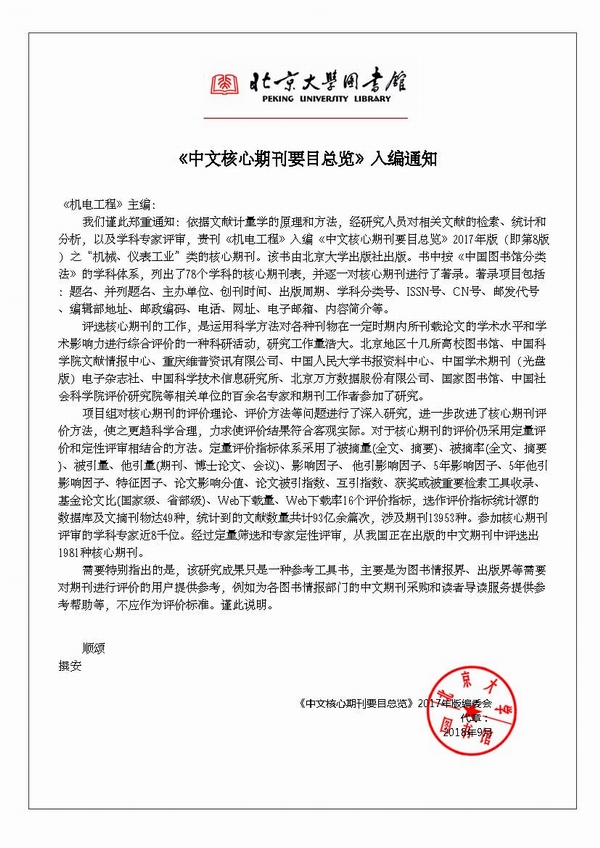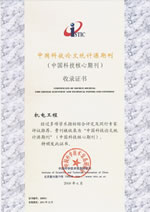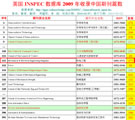
Founded in 1971 >
Chinese Sci-tech Core Periodicals >
British Science Abstracts (SA, INSPEC) Indexed Journals >
United States, Cambridge Scientific Abstract: Technology (CSA: T) Indexed Journals >
United States, Ulrich's Periodicals Directory(UPD)Indexed Journals >
United States, Cambridge Scientific Abstract: Natural Science (CSA: NS) Indexed Journals >
Poland ,Index of Copernicus(IC) Indexed Journals >
International Standard Serial Number:
ISSN 1001-4551
Sponsor:
Zhejiang University;
Zhejiang Machinery and Electrical Group
Edited by:
Editorial of Journal of Mechanical & Electrical Engineering
Chief Editor:
ZHAO Qun
Vice Chief Editor:
TANG ren-zhong,
LUO Xiang-yang
Tel:
86-571-87041360,87239525
Fax:
86-571-87239571
Add:
No.9 Gaoguannong,Daxue Road,Hangzhou,China
P.C:
310009
E-mail:
meem_contribute@163.com
Abstract: Aiming at the problem of inertia coupling characteristics of 3-PRS parallel mechanism, the dynamic model of 3-PRS parallel mechanism was established in joint space, and the inertia coupling between active branches was studied.Firstly, the kinematics model of mechanism was given. Aiming at the coupling problem of generalized pose, velocity and acceleration of moving platform, it was decoupled by constraint equation, first-order influence coefficient matrix and second-order influence coefficient matrix respectively. The relationship was established of velocity and acceleration between branches and moving platform. The kinematics model was verified by simulation. The dynamics model of mechanism was established by virtual principle and verified by simulation. Then, in the joint space, the dynamics model of mechanism was established. Finally, the change of the evaluation index of inertia coupling characteristics with the motion of the mechanism was studied in the workspace of the mechanism. The results show that the inertia coupling strength of dynamics between the branches can be reduced,and the influence on the dynamic performance of the mechanism can be reduced by properly planning the kinematic space of the mechanism.
Key words: 3-PRS parallel mechanism; decoupling; dynamics model; inertia coupling characteristics








